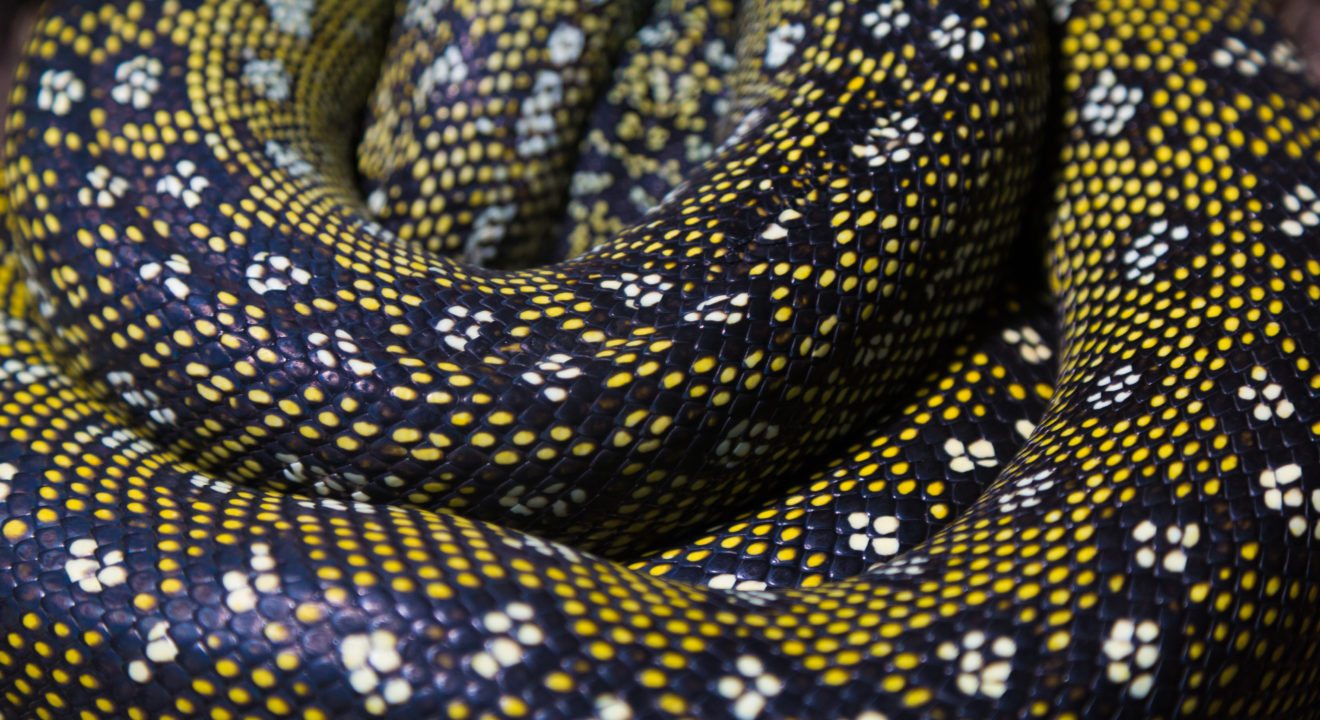Style October 8, 2016


You’ve been searching for a pair of snakeskin boots for months. Scouring every department store and vintage boutique, you’ve come up empty-handed. That is, until you hit the high end stores on the other side of town. The incandescent glow of the names Gucci, Hermes, Prada and Chanel light up the aisle of women’s shoes before you. Your dream snakeskin shoes are right there in front of you. Picking them up like a newborn child in your arms, you walk them over to the register with a smile of triumph. Perseverance and determination have finally led you to this moment. But did you ever think about where those boots came from?
After gracing lists of “Top trends to follow this year” and adorning the arms and legs of celebrities everywhere, it’s easy to see that snakeskin is here to stay. There’s something about the exotic origins of foreign skins that draws luxury buyers like a moth to the flame. What makes snakeskin so alluring to consumers? Snakeskins are limited in quantity, hard to get and have become a status symbol of the fashion world. But behind their natural beauty and irresistible quality lies a world of illegal trade and animal abuse that is often ignored.
The first issue facing the acquisition of snakeskins is the legality of how they’re captured and sold. Though there are quotas in place to limit hunting of wild pythons (and other snake varieties), local citizens don’t always adhere to regulations. When they’ve caught over their quota, they’re more concerned about getting rid of their excess skins, not maintaining the snake population.
According to an article by the BBC, Southeast Asia exports half a million python skins each year. These skins clock in at an estimated $1 billion value. To make matters worse, PETA estimates that, “For every animal who is legally killed for the exotic skins trade, another will be illegally poached.”
With such a high demand from the fashion world for these skins, hunters are cutting corners to make the biggest profit they can. Though someone may end up with a beautiful handbag, over-hunting means that python populations might be facing some major stresses. According to the BBC, many pythons are killed for their skins before they have even reached maturity. These snakes are unable to reproduce before they are hunted, which is severely affecting the health of these species’ populations.
The practice isn’t only unsustainable, it also crosses the border into animal cruelty in some areas. Killing the snakes is a task in itself, and usually a gory one. The first method used to kill the snakes is by decapitation. Though in many animals this indicates an almost instant death, an article by Daily Mail states that snakes are not so lucky. Clifford Warwick, a consultant biologist and reptile expert, states that, “With a snake the head will be alive for an hour or two hours – completely conscious, completely sensitive to pain, fear and everything else.” Because snakes have such a slow metabolic rate, as well as a lower necessity for oxygen, their heads remain alive for much, much longer than previously thought.
Unfortunately, all of the methods for killing the creatures parallel in terms of cruelty. Throughout much of the process, they are usually alive throughout the different processes, one of which is asphyxiation. This article by PETA shared the gory details of the process. And while the process is cruel in itself, a report by the International Trade Centre states that snakes could be seen moving 15-30 minutes after the ordeal.
Though snakeskins have been an iconic style statement since the ’70s, it may be time to relook the trend and think about whether it’s truly worth supporting. If you can’t let go of your snakeskin obsession, there’s no need to worry! Modern technology has created hyper realistic variations of faux snakeskins that are actively being used within the industry. New York based fashion designer, Marc Bouwer, is no stranger to snakeskin. Responsible for dressing celebrities such as Angelina Jolie, Sarah Jessica Parker and Halle Berry, he says that faux snakeskins “are actually superior and last much longer; I think a lot of people are wearing fake skin already and don’t even know it.”
If you’re looking to make a change in the industry, vote with your dollars! Opt for a faux snakeskin or snakeskin print rather than the real thing. Supporting sustainability is always in fashion.